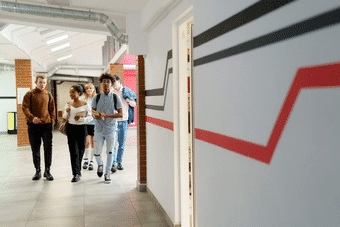social & emotional learning - Initiating
Professional Development > Learning Playlists > Social & Emotional Learning – Initiating
The positive impact of Social and Emotional Learning (SEL) is substantiated by extensive research, demonstrating that an educational framework emphasizing SEL results in favorable outcomes for students, educators, and the wider school community. Numerous independent studies across diverse disciplines confirm that SEL leads to advantageous outcomes in areas such as social and emotional skills, academic achievement, psychological well-being, positive health behaviors, school environment and safety, and long-term life outcomes (Collaborative for Academic, Social, and Emotional Learning).
Prioritizing the SEL requirements of educational institutions is crucial for cultivating environments where all students can flourish. The following resources are recommended for schools and districts embarking on the SEL Pillar. Those exploring SEL implementation may find themselves contemplating initial steps. These resources focus on SEL Instruction and Modeling, which are fundamental components of school or district-wide SEL implementation. A school or district is prepared for the “initiating” phase of the Social and Emotional Learning Pillar when schools are motivated, but lack the direction and resources to support the implementation.
- To provide schools with foundational research, articles, and practical tools introducing key concepts in developing resilient schools.
- To offer differentiated pathways based on the school’s time, effort, and commitment.
- To create an access point with resources for school teams as they develop their action plan.

CASEL’s survey is used to gain a better understanding staff experiences and perceptions of social emotional learning (SEL). Through this survey, schools can learn more about the day-to-day SEL practices and solicit thoughts and ideas about them.
You can take the CASEL survey on the RSSI site www.rss-illinois.net For more information and to download a copy of this survey, go to the CASEL site School-based Staff Survey on Schoolwide SEL Implementation – Casel Schoolguide – Casel Schoolguide
- 10 mins

This course provides an overview of the importance of adult social and emotional learning to student success and well-being in school and life. Learn how to: define adult social and emotional learning (SEL); describe why adult SEL is critical to educators’ practice; explain the importance of developing adult SEL through an equity lens; and apply five specific strategies to enhance your SEL competency.
- 60 mins
- Connecting Schoolwide SEL With Other School-Based Frameworks

- 40 minutes
SEL, MTSS and PBIS: Some of the most common frameworks for organizing student supports are Multi-Tiered System of Supports (MTSS) and Positive Behavioral Interventions and Supports (PBIS). Adopting schoolwide SEL does not mean that a school must abandon these existing frameworks. Rather, schoolwide SEL offers an opportunity to enhance or refine existing systems of support. Click here for this guide from CASEL defines Schoolwide SEL, MTSS, and PBIS, then describes how these frameworks can align with and complement one another.
CASEL’s Framework: Learn more about CASEL’S framework, known to many as the “CASEL wheel,” that helps cultivate skills and environments that advance students’ learning and development. What Is the CASEL Framework? – CASEL
Framework for Early Childhood: The Pyramid Model is a framework of evidence-based practices for promoting young children’s healthy social and emotional development. Basics – National Center for Pyramid Model Innovations
Elementary and Secondary Framework: RULER is an evidence-based approach to social and emotional learning (SEL) developed at the Yale Center for Emotional Intelligence. RULER supports entire school communities in: understanding the value of emotions; building the skills of emotional intelligence; and creating and maintaining positive school climates. RULER Approach
Equity-Driven Framework: The BELE Framework, from the National Equity Project, stands for Building Equitable Learning Environments, and is a guide for transforming student experiences and learning outcomes. The BELE Framework – BELE

This brief from American Institutes of Research reviews research on how positive school climates support SEL and how improved SEL contributes to improved school climate in elementary and secondary schools. The brief discusses school climate, SEL, and blended models that have effects on school climate and social and emotional competence.
- 15 mins

This guide examines some common root causes of staff resistance, such as burnout, a lack of trust, and fear. It offers actionable strategies for leaders to mitigate the effects of resistance by encouraging them to recognize such resistance as a source of vital information that productively illuminates important gaps or opportunities in initiative implementation. By reframing their approach as one of openness and curiosity, leaders can create favorable conditions for school staff to support the school climate initiative. Questions throughout the guide provide opportunities for leaders to reflect on the best staff engagement approaches.
Reframing and Understanding Staff Resistance to Advance Positive School Climates – SEL Center
- 20 mins
- Teacher Are Anxious & Overwhelmed: They Need SEL More Than Ever (article)

This article from 2020 still rings true. Research tells us that the general causes of teacher stress and burnout are related to a lack of strong leadership and a negative climate, as well as increased job demands, especially around testing, addressing challenging student behaviors, a lack of autonomy and decision-making power, and limited-to-no training in social and emotional learning (SEL) to support educators’ and students’ emotional needs. This article from Yale Center for Emotional Intelligence, describes how emotions drive effective teaching and learning, the decisions educators make, classroom and school climate, and educator well-being. Read about the five primary reasons that educators’ emotions matter.
Teachers Are Anxious and Overwhelmed. They Need SEL Now More Than Ever. | EdSurge News
- 7 mins
- Six Ways to Sustain SEL in Schools (blog)

Sustaining SEL efforts over the long term is crucial to allow children to adequately develop these skills. But that sustainability faces barriers in the form of staff turnover, limitations on resources, and competing for precious classroom time against other programs and initiatives. This article provides six key ways to support sustaining SEL PreK–12 efforts districtwide.
Click on the link to read more about 6 ways to sustain social-emotional learning in schools.
- 7 mins
- Every Student Matters: Cultivating Belonging in the Classroom (article)

These five strategies can help ensure that students feel they belong in your classroom.
Click on the link to read more about 5 Strategies to Cultivate Belonging in the Classroom | Edutopia
- 5 mins
- A Response to Constructive Criticism of SEL (article)

- 15 mins
This article provides background context and filling readers in on where the SEL movement has been, the strategic thinking that has guided CASEL field leaders and collaborators, and the possibilities we see for the future. The authors of this article, who are experts in the field of SEL, address four main areas of concern that surrounds SEL: ambiguity, hype, equity and culture, and impatience. The SEL movement requires a long-term commitment to gaining support for the work, building strong professional communities of practice, managing political pressures, and finding a healthy balance between holding schools to fixed standards and allowing flexibility to adapt programming to local contexts, needs, and values.
A response to constructive criticism of social and emotional learning – Kappan Online
